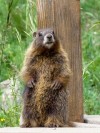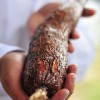 Spain is the latest European government to reduce state incentives for solar power, after its industry ministry on 1 August confirmed cuts to feed-in tariffs — the price an electricity utility must pay to generators of solar energy. A draft law, now under review with the national energy regulator CNE, would cut subsidies by 45% for new large, ground-based photovoltaic plants, and by 25% and 5% for large or small roof-top panels, respectively. Existing plants might also have their subsidies cut, once the law’s details are clarified later this year. Germany and Italy have also announced solar subsidy cuts this year.
Spain is the latest European government to reduce state incentives for solar power, after its industry ministry on 1 August confirmed cuts to feed-in tariffs — the price an electricity utility must pay to generators of solar energy. A draft law, now under review with the national energy regulator CNE, would cut subsidies by 45% for new large, ground-based photovoltaic plants, and by 25% and 5% for large or small roof-top panels, respectively. Existing plants might also have their subsidies cut, once the law’s details are clarified later this year. Germany and Italy have also announced solar subsidy cuts this year.
Category Archives: Formats
Marmots fatten up on climate change
 In the Upper East River Valley of Colorado’s Rocky Mountains, yellow-bellied marmots (Marmota flaviventis) are thriving thanks to climate change. The rodents’ startling population boom — their numbers have tripled in ten years — has now been linked to the increasing size of their bellies, which is probably caused by climate-driven changes in hibernation patterns.
In the Upper East River Valley of Colorado’s Rocky Mountains, yellow-bellied marmots (Marmota flaviventis) are thriving thanks to climate change. The rodents’ startling population boom — their numbers have tripled in ten years — has now been linked to the increasing size of their bellies, which is probably caused by climate-driven changes in hibernation patterns.
Read the rest of this news story on Nature News [html] or read it here: [pdf]
Fossil skull fingered as ape–monkey ancestor
 The rust-coloured plateau above Mecca in Saudi Arabia may soon attract pilgrims of palaeontology. The hills, which overlook the Red Sea, have disgorged the 29–28-million-year-old partial skull fossil of an early primate that possesses features both of apes and monkeys. The skull could help palaeontologists to answer questions about the life of primates in a period that until now has provided few fossils.
The rust-coloured plateau above Mecca in Saudi Arabia may soon attract pilgrims of palaeontology. The hills, which overlook the Red Sea, have disgorged the 29–28-million-year-old partial skull fossil of an early primate that possesses features both of apes and monkeys. The skull could help palaeontologists to answer questions about the life of primates in a period that until now has provided few fossils.
When he caught sight of the skull during an expedition in search of ancient whale fossils last year, Iyad Zalmout wondered whether it belonged to a monkey or an ape. “It turns out it’s not an ape, it’s not a monkey, it’s something intermediate,” says Zalmout, a palaeontologist at the University of Michigan in Ann Arbor, and an author of a paper published in Nature today. Continue reading Fossil skull fingered as ape–monkey ancestor
Virus-resistant cassava could be available by 2015
 Cassava breeds that are resistant to two major viruses could soon be available to farmers in Africa.
Cassava breeds that are resistant to two major viruses could soon be available to farmers in Africa.
Cassava mosaic disease and brown streak disease stunt the growth and rot the roots of crops, respectively.
Mosaic disease alone destroys an estimated 35 million tonnes of African cassava a year — the difference between needing to import food into Africa and achieving food independence, according to researchers at the US-based Donald Danforth Plant Science Center.
The team has shown in the laboratory tests that genetically engineered (GE) tobacco plants resist brown streak disease. Their results will appear in Molecular Plant Pathology next month (August), Claude Fauquet, lead author of the study and director of cassava research at the centre, told SciDev.Net. Continue reading Virus-resistant cassava could be available by 2015